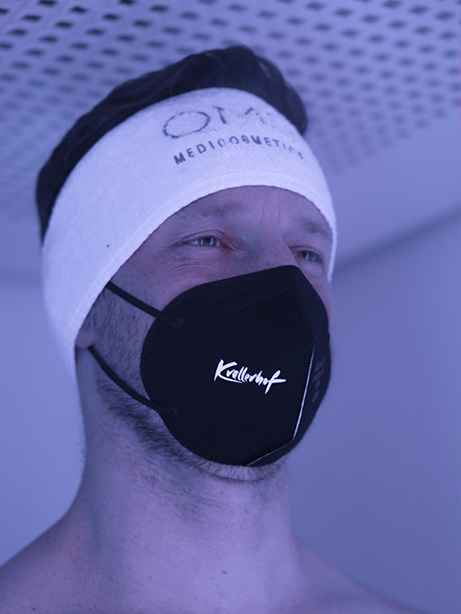

The Path to Cellular Activation – How Power Plants Come Back to Life
Michaela Altenberger,
- Can depleted mitochondria be specifically regenerated?
- Which targeted methods sustainably activate cellular energy production?
- How does scientific knowledge translate into tangible vitality?
The insight is sobering: mitochondria collapse under modern stress. But there is real hope: they can be reactivated – through precise molecular-level interventions.
The Secret of Mitochondrial Biogenesis
Mitochondria can divide, multiply, renew themselves. This process is called mitochondrial biogenesis. The key lies in a protein named PGC-1α, the “master regulator” of cellular energy production. This molecule decides whether new power plants emerge or existing ones decay.
PGC-1α is activated by a seeming contradiction: controlled stress. Cold, heat, oxygen deprivation, intense physical activity – these mild stressors force cells to adapt. The principle is known as hormesis: what challenges in the short term strengthens in the long term.
Regular training, for example, massively stimulates mitochondrial biogenesis. Both the number and efficiency of mitochondria increase, muscles produce more ATP, and endurance noticeably improves.


The Dance of Electrons
In healthy mitochondria, a complex biochemical ballet unfolds. Electrons move from molecule to molecule like water drops running down a mountain, driving turbines along the way. Protons are pumped through the inner mitochondrial membrane, creating an electrochemical gradient – the driving force for ATP synthase, the molecular turbine that produces around 100 ATP molecules per second.
But this process is vulnerable. Oxidative stress – aggressive oxygen molecules formed as a byproduct of energy production – can bring the system to collapse. Mitochondrial DNA is particularly fragile, as it lacks sufficient repair mechanisms.
The Krallerhof Method: Precise Cellular Activation

IHHT (Intermittent Hypoxia-Hyperoxia Therapy): Alternating between low and high oxygen simulates high-altitude training at the cellular level. Mitochondria are pushed to increase efficiency – like athletes in altitude camps. The result: measurably enhanced endurance and energy, felt even by non-athletes.

Red Light Therapy: Photobiomodulation using red and infrared light activates cytochrome c oxidase, the fourth enzyme in the respiratory chain. The light acts as a molecular catalyst that boosts energy production directly. Cells start to breathe again, quite literally.

Cold Therapy: At minus 110°C, the body is forced into thermogenesis. Brown adipose tissue, rich in mitochondria, is massively activated. The protein UCP1 decouples ATP production from heat generation – triggering explosive mitochondrial biogenesis.
Micronutrient Precision
Mitochondria are molecular connoisseurs. In addition to proper nutrition, targeted micronutrients are beneficial.
- CoQ10 acts as an electron carrier in the respiratory chain.
- Magnesium stabilizes ATP molecules.
- B vitamins are cofactors in countless enzymatic reactions.
- Omega-3 fatty acids, antioxidants, and polyphenols demonstrably support the growth and function of new mitochondria.
- And NAD+, the “molecule of youth,” is essential for mitochondrial repair and function.
The Promise of the Cellular Revolution
The most immediate benefit of optimized mitochondrial biogenesis is clear: increased energy and endurance. Whether high-performance athlete or exhausted executive – functioning mitochondria make the difference between surviving and thriving.
The brain especially benefits. As the most energy-hungry organ, it needs optimally functioning mitochondria for mental clarity and focus. Caring for your cellular power plants is an investment in cognitive sharpness.
What’s practiced today at the Krallerhof is a preview of a medicine that doesn’t just treat symptoms – but addresses the root of life itself. Mitochondria are more than power plants: they are the conductors of the cellular orchestra, the guardians of vitality and decay, the key to longevity.
The mitochondrial revolution is just beginning. But its message is clear: those who invest in cellular health are investing in the very foundation of life – and a future full of energy.




